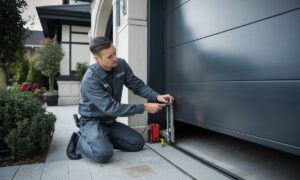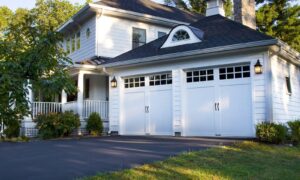Often referred to as garage door spring replacement or garage door torsion springs, garage door springs are among the most crucial parts of your garage door. To ensure that your garage door is functioning correctly, you must replace any broken springs.
A garage door is easier to lift and open with a torsion spring. Tension rises when a garage door closes. The tension is alleviated when the garage door opens. Additionally, torsion springs serve as safety devices to prevent unintentional door falls on you. An automated opener should not be used to open or close a garage door with a broken spring.
The average garage door spring cost is $250, with rates ranging from $150 to $350 for clients nationwide. The modern world has quickly made automatic garage doors necessary. Since homeowners depend so heavily on them, it’s simple to overlook that they eventually require replacement parts when they wear out until they unexpectedly stop working.
Things to Know About Garage Door Torsion Springs
Regular inspection of torsion springs is essential to identify signs of wear and potential issues. Common signs of wear include visible gaps or spaces in the coils, rust, or uneven tension. If the door appears unbalanced, sags on one side, or exhibits jerky movements, it may indicate torsion spring issues. If a homeowner discovers squeaking, rust, corrosion, excessive wear and tear, or problems with functioning, the garage door spring may need to be replaced.
Garage door torsion springs are critical components that play a central role in the smooth and controlled operation of overhead garage doors. Understanding key aspects of these springs is essential for homeowners and those involved in garage door maintenance. Here are important things to know about garage door torsion springs:
● Function and Operation
Torsion springs are responsible for providing the lifting force needed to open a garage door. They are mounted horizontally above the door and are wound tightly when the door is in the closed position. When the door is activated to open, the springs unwind, releasing stored energy and assisting in the lifting of the door.
● Lifespan and Cycle Ratings
Torsion springs have a limited lifespan, typically measured in cycles. A cycle refers to one complete opening and closing of the garage door. The average residential torsion spring may have a lifespan of 15,000 to 20,000 cycles, but this can vary based on factors like the quality of the spring, usage, and maintenance.
● Quality and Materials
The quality of torsion springs is a crucial factor in their performance and longevity. High-quality springs are often made from tempered steel or other durable materials. Choosing quality springs is essential for ensuring that they can withstand the stress of regular use and provide reliable performance.
● Safety Cables
Torsion springs are under high tension, and if one were to break, it could be dangerous. To enhance safety, many garage doors are equipped with safety cables. These cables run through the center of the torsion springs and are secured to the bottom bracket of the door. In the event of a spring failure, the safety cables help contain the broken spring and reduce the risk of injury or property damage.
● Professional Installation and Repairs
Installing or replacing torsion springs requires specialized knowledge and tools. It is not recommended for homeowners to attempt DIY installations or repairs due to the potential hazards associated with high-tension springs. Professional garage door technicians have the expertise to safely install, adjust, or replace torsion springs.
● Maintenance and Lubrication
Proper maintenance can extend the lifespan of torsion springs. Regular lubrication of the springs helps reduce friction and wear, contributing to smooth operation. Lubrication should be performed using a recommended lubricant, and any signs of wear or damage should be addressed promptly.
When it’s time to replace a torsion spring, it’s advisable to replace both springs, even if only one has failed. Springs are typically installed in pairs to ensure balanced operation. Replacing both springs at the same time helps maintain the proper counterbalance and prevents uneven wear.
● Weather Considerations
Extreme temperatures, especially in regions with harsh winters, can affect the performance of torsion springs. Cold weather can make the springs more brittle, increasing the risk of breakage. Adequate lubrication and periodic inspections become even more crucial in such climates.
Final Words
The garage door torsion springs are integral to the reliable and safe operation of overhead garage doors. Understanding their function, lifespan, safety features, and the importance of professional installation and maintenance is vital for homeowners. Regular inspections and prompt attention to any signs of wear or imbalance contribute to the overall longevity and efficiency of the garage door system.



































